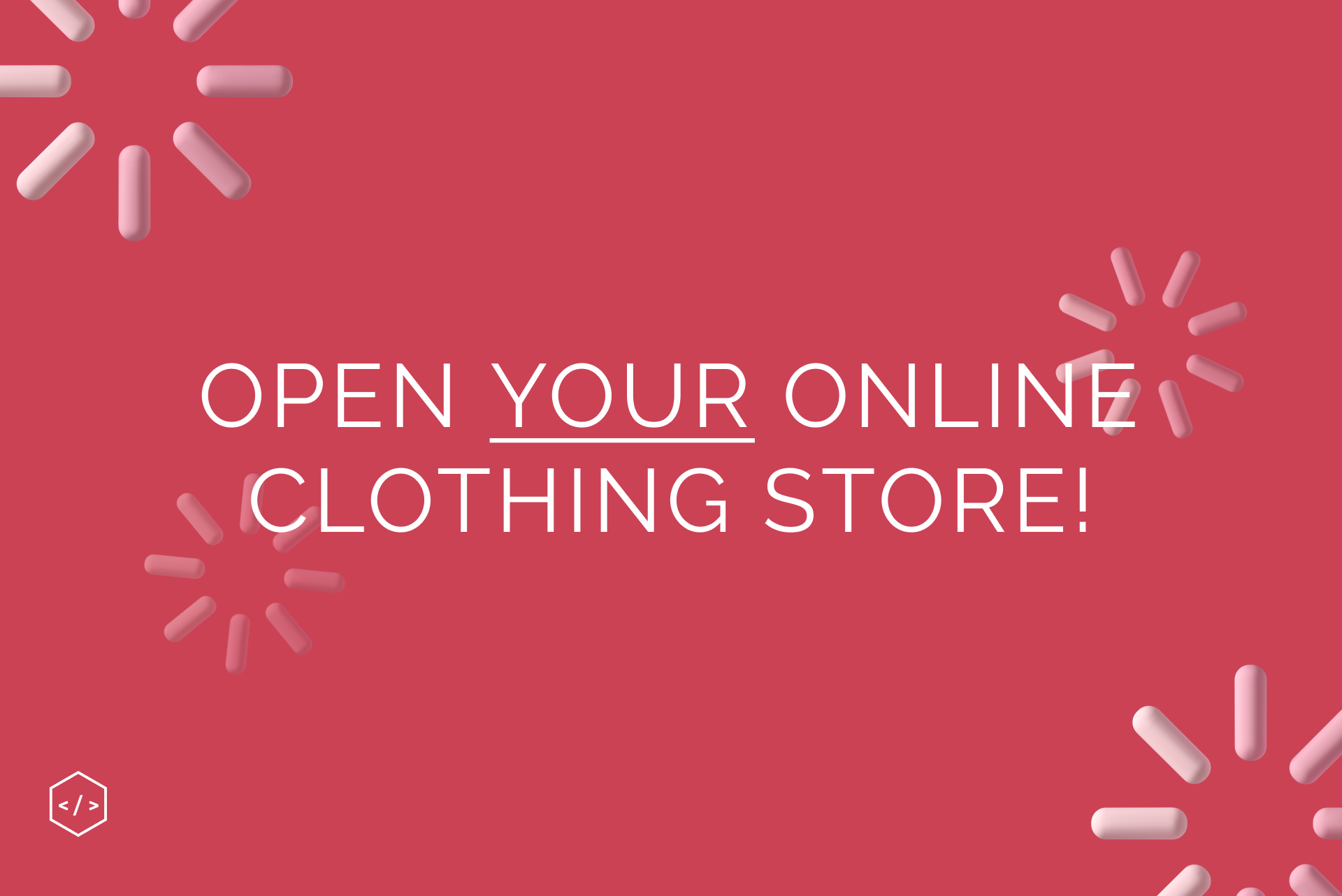How to Start an Online Clothing Store: 10 Important Steps

If you are the kind of person who is seriously passionate about fashion, you probably thought of opening your online clothing store more than once. It's understandable: designers, buyers, stylists, and other fashion industry experts say online is power.
The advantages of online trading are pretty obvious. The most important thing is access to a vast audience because a buyer from anywhere in the world can look into your store. An ordinary physical "point" cannot boast of such an advantage. But that's not all. A website is an essential component of branding, and branding nowadays plays one of the leading roles in the success of any enterprise.
That's why we decided to collect all the valuable information and write a detailed guide for everyone who dreams of opening an online clothing store. We do not promise that it will be easy, but with due diligence, there is every chance to win your place in the hearts of buyers.
1. Decide what you are selling and to whom
Let's face it: don't try to compete with the giants and rush to open a general store for everyone. Think of the concept first. You can start by thinking about what is closest and most interesting to you in the fashion world. Maybe you love vintage? Do you know where to get good things in small or vice versa - cool and fashionable plus size? Or perhaps you know a local craftswoman who sews excellent bags? Or do you understand the brands of beautiful, unusual, and not very expensive children's clothing? You may talk to your friends and acquaintances and ask what they lack. Your task at this stage is to formulate a clear, easy-to-read message - who you are and what you offer. And for whom. Without understanding the product and audience, you risk losing time and money.
2. Create an online store and choose a suitable template
So, you have decided on the main thing, considered everything, and decided to act. And even already found an online constructor and looked after a suitable template. Great, the main thing is to keep in mind that a good template for an online store meets specific criteria.
- First and most important: the template should have all the functionality of an online store: a gallery of goods, a shopping cart, and the ability to select and connect various payment methods and delivery of orders. If your store will have special delivery conditions or, say, the ability to buy something on demand, make sure that all this can be implemented on the chosen platform.
- The following criterion is related to your store's design and corporate identity. You have probably noticed that designers draw templates for different types of stores in various styles and consider their features. By choosing the suitable template from the right category, you spend a minimum of time on its refinement and, simultaneously, strengthen your brand's image. Pay attention to the template's color palette and the photos' proposed size. Details matter, so don't ignore them.
- And, finally, the last criterion - simplicity and convenience in the work process. Even if you find the perfect template, you still need to make changes to it. The best template is one that you don't have to sit around for days and call a programmer friend for help. Let's take this opportunity and note that on Magento 2, you can create any. Don't thank :)
Leran more: Upgrade your skills at the workshop!
3. Stay in style
What do you sell? Vintage? Children's clothes? Is your assortment more strict with minimalism or boho-chic? The style of what you offer should be combined with the design of your store so that the target audience immediately understands that they have come to the right place. For example, you can look at the store Sweater Shop. The pure, saturated colors of the products echo the site's palette; it seems very thoughtful and makes you understand what awaits you here.
4. Take good product photos
The person who comes to the store for clothes or shoes, least of all, wants to buy a pig in a poke: he needs to understand what the desired thing looks like. We advise you not to save on a photographer and take high-quality pictures of goods. Such that the buyer carefully considered everything and wanted to buy. Be picky; carefully choose the location of the shooting, the style, and even the models. Do not treat this task as a passing one. We understand that we are talking banalities, but photos are the face of your store.
5. Fine-tune the buying process
Online shopping should be easy, fast, and enjoyable. Buyers do not want to use their last strength to break through to the goal, that is, to purchase. If anything prevents them from completing what they started, be sure that they will not come back, and all your efforts will go down the drain.
6. Make a good product gallery
It's always nice to have a choice, especially when buying clothes, accessories or shoes. The buyer wants to make an informed choice and choose what will please and fit him. Help him - work on the product gallery, and make it as visual as possible. Be sure to include size, color, composition, and manufacturer information. Then show how the thing looks in real life - add more pictures from different angles and poses. You can follow the example of large online stores and add short videos.
Learn more: Seven skills that will help you survive 2022
7. Optimize your mobile store
The realities of the modern world are such that many people come to your store on smartphones and tablets. Do not miss them - make a mobile site version and test it on all available devices. Remember that the process of buying from a phone is not the same as from a regular computer. Mobile users scroll the page, not click on the links, so you need to think about the vertical layout - in length, not in the screen's width. Pictures and texts should be visible and not merged. And, of course, add sorting filters so people can quickly find what they need.
8. Look for buyers on social networks
In an ideal world, customers will find out about you themselves. The reality is that you need to advertise your store in crowded areas actively. In other words, to master the world of social networks. Since your product is clothing, and clothing is sold through images, you need to take it on Instagram and Facebook. Success will not come the next day, but if you regularly post exciting publications, are interested in the audience, and consider its needs and tastes, then do not hesitate - over time, it will begin to be interested in you. Just do not forget that posts written on a case-by-case basis are ineffective. Plan your publications for holidays, seasonal offers, sales, promotions, etc.
9. Search engine optimization plus quality content
If you have a website, you need to promote it. Most buyers come through the search results, so your task is to ensure that Google finds your site. But this does not mean you must fill the place with hackneyed optimized texts. Write interestingly, write qualitatively, and write yourself! And be careful with keywords. Find a reasonable balance, maintain the style, and speak to customers in a human voice without slipping into salesman mode.
10. And excellent bonuses
Buying clothes or shoes online is often risky. There is always a chance that the product will not feel the same as it seemed in the picture, that the size will not fit, and that the thing will not fit as it should. You can reduce the buyer's anxiety by offering them various bonuses, such as free shipping or returns at your expense. People will worry less and buy more boldly because the goods can always be returned if something happens. We also recommend adding a detailed table of sizes and clarifications - what is small, what is significant, what is the fullness of the product, etc. And, of course, do not forget about promotions and promotional codes - they work! Buy a good thing, and even at a discount - how can you resist?





